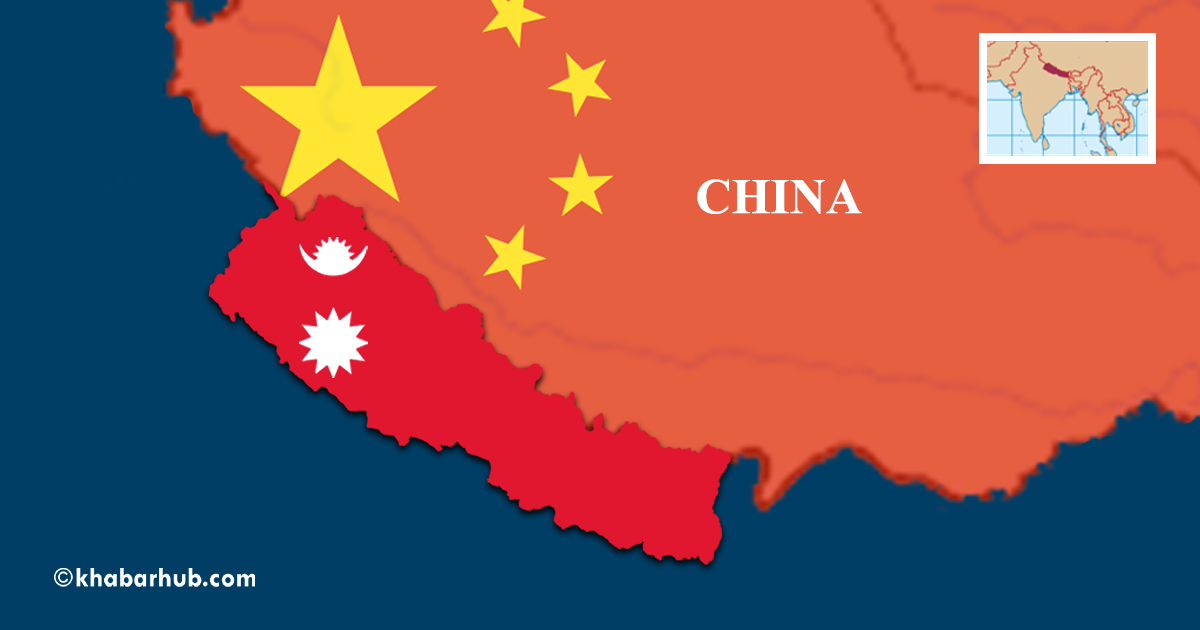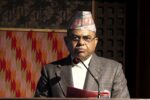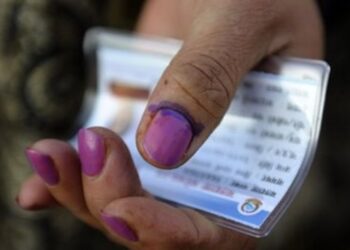KATHMANDU: Observers have expressed worry over the implementation of the projects in Nepal under China’s Belt and Road Initiative (BRI) saying that Nepal could not make any headway on it.
In fact, Nepal plunged into it without much erudition as it also could not resist Beijing’s pressure.
That’s why no projects have made any headway on infrastructure project negotiations in all these three years as whether they should be taken forward on loans or grant or interest-free loan/concessional loan.
Reason: Ministers and concerned authorities merely talk, not act as they fail to come up with the financial modality and the detailed project report.
There are fears over loans that Nepal will not be able to pay back the loan even as several small countries, including Nepal, accepted BRI as an alternative pathway toward economic prosperity.
One among the countries falling in the debt trap in the South Asian region is Sri Lanka, which has often been cited as a cautionary tale.
To note with caution, this island country agreed to give China a 99-year lease on a port as it was unable to repay the loans on a US$1.5 billion port construction project.
Sri Lanka was compelled to take the decision to get out of the debt trap. Nepal, too, should over it, warns experts.
There are observations that China is trying to create its own international space in one way or the other, particularly through BRI.
For instance, US Secretary of State Mike Pompeo recently said Beijing participates in international organizations “to validate its authoritarian system and spread its reach.”
However, former finance minister Dr Prakash Saran Mahat says Nepal endorsed the BRI by making quite a number of reforms on the issue by considering the country’s interest and requirements.
“Nepal should not seek BRI’s support if it does not benefit or address our interests and requirements,” says Dr Mahat adding, “Nepal should make every benefit out of it. However, we should not accept any support if it will have a long-term adverse impact in Nepal’s interest.”
However, what needs to be understood is that China does not give grants to those countries joining the BRI. It merely provides loans at commercial rates with a hidden motive – to plunge the country into debt-trap.
Nepal’s Prime Minister KP Oli went to China and signed agreements worth US$2.4 billion on projects, including infrastructure, energy and post-disaster reconstruction efforts.
Nepal joined China’s BRI in 2017 despite being aware of the fact that the BRI had led to concerns about how Beijing’s flagship trans-national infrastructure project could create huge debt crisis for a country like Nepal.
Imagine the cost of the project that is estimated to be US$1 trillion. China has tried to intimidate Nepal claiming that BRI is a ‘big opportunity’ for Nepal and other countries to revitalize their economies.
However, what needs to be understood is that China does not give grants to those countries joining the BRI. It merely provides loans at commercial rates with a hidden motive – to plunge the country into debt-trap.
Pompeo had said recently: “I must say that the China’s Communist government is not the same as the people of China.”
By saying so, he was blaming China for ‘reaching for and using methods’ that have created challenges for the US and the entire world. His statement is evident that Beijing government should not be trusted.
Pompeo emphasized the need to collectively confront the challenges from China head-on.
Trumpeted as a boon to the country to promote Nepal’s tourism, in the list is the bold project of construction of a railway line through the Himalayas, which will link the Tibetan border town of Kerung with Kathmandu, Pokhara and Lumbini.
It was widely speculated that more than 2.5 million Chinese tourists will visit Nepal every year.
Argument is whether this proposed rail line is financially feasible for a country like Nepal? Fine, even if it is completed, will Nepal be able to pay back?
“First we should be clear whether Nepal will get grant or loan under BRI,” says Dr. Shankar Sharma, former Vice Chairman of National Planning Commission.
“We need to thoroughly access the cost and its financial modality of the projects in the BRI,” he said, adding, “Will we be getting grants, concessional loan and how much is the Chinese side willing to contribute to each project. If such issues are not analyzed well, we may put ourselves in a difficult situation.”
However, what needs to be well considered is that the preliminary estimates of the railway line from Kerung to Kathmandu puts at around US$5.5 billion, which is almost equal to Nepal’s total annual revenue.
Argument is whether this proposed rail line is financially feasible for a country like Nepal? Fine, even if it is completed, will Nepal be able to pay back?
China has conducted a pre-feasibility study of the Kerung-Kathmandu railway estimating that this 72.25km track from Kerung to Kathmandu would cost around US$2.25 billion. Forget about other estimates. Now comes the question of cost. Can Nepal afford?
China, as observers say, is well-aware that Nepal will not be able to pay back the debt.
Nepal needs to again look at Sri Lanka and other countries where China has penetrated in the name of projects.
Sri Lanka, now, struggles to pay back the US$8 billion in total. Furthermore, it now owes Chinese firms. Several other countries are in similar straits – for example Laos, which has seen its debt reach 68 percent of GDP.
Now that it is in a difficult situation to pay off its share of a US$6 billion rail line being built by China.
Take the example of the Maldives as the country, too, faces a looming debt trap, with US$92 million in annual payments.
The burning question here in Nepal is whether the railway line and other projects under BRI would be built with similar loans. If so, Nepal undoubtedly, would fall into a debt trap.
Observers have to note that had China been serious to support Nepal in building infrastructure projects without any hidden motive, it would have given grants to Nepal instead of loans.
China has tried to impress the Nepalis that building a rail line from China to Kathmandu will end Nepal’s reliance on India for trade, food, and fuel, among others.
The KP Oli-led government is currently paving the way for China to increase its influence in the country.
Take for instance what Foreign Minister Pradeep Gyawali said: “The government’s priority is to create opportunities for the country by focusing on connectivity between Nepal and China.”
This becomes evident that Nepal is under coercion from its northern neighbor – as the country has regrettably embarked on the process of falling into this debt trap in the pretext of infrastructure development under BRI.
However, sadly enough, these two countries are yet to arrive on an understanding on the mode of funding for the BRI projects as experts see this as an imminent threat that could end up leaving Nepal with unsustainable debt.
Nepal has moved towards a risk zone. It should tread cautiously to ensure that it does not fall into the same Chinese debt trap as Sri Lanka and other countries.
The country has identified altogether nine projects to finance under the BRI. However, all negotiations have been stalled due to confusions on the execution of projects, financing, etc.
The Chinese side, as highly-placed sources said, merely propose the name of the project and its salient features. However, China does not come clear on the issue of financing modality.
Some sections in Nepal are skeptical about implementing these projects as they fear Nepal, too, will fall into debt-trap like some other South Asian countries.
The two countries signed a framework agreement on BRI on May 12, 2017 in Kathmandu.
According to the agreement, the pact will be valid up to May 12, 2020.
Nine projects were identified under the BRI such as the Kerung-Kathmandu rail; Kimathanka-Hile road construction; Rasuwagadhi-Kathmandu road up-gradation; Galchhi-Rasuwagadhi-Kerung 400kv transmission line; construction of road from Dipayal to the Chinese southern border; Tokha-Bidur road; 426MW Phukot Karnali hydroelectric project; 762MW Tamor hydroelectricity project; and the Madan Bhandari Technical Institute.
Besides the completion of the feasibility study of the Kerung-Kathmandu railway, all other projects are stalled.
Some sections in Nepal are skeptical about implementing these projects as they fear Nepal, too, will fall into debt-trap like some other South Asian countries.
A US think tank, Centre for Global Development, has said BRI investments have increased the risk of the debt crisis in eight countries; Laos, Mongolia, Montenegro, the Maldives, Djibouti, Pakistan, Tajikistan and Kyrgyzstan.
Some experts have to label the BRI of being ‘geo-colonial’ as they allege China of practicing ‘debt-trap diplomacy’ in the name of funding its infrastructure projects.
Nepal, therefore, should be cautious that it does not fall in a debt trap as many other countries have fallen.









Comment